The Best Jewish Children’s Books of 2016
Stories about Noah’s Ark, Jewish weddings, and scientific discovery make perfect Hanukkah gifts
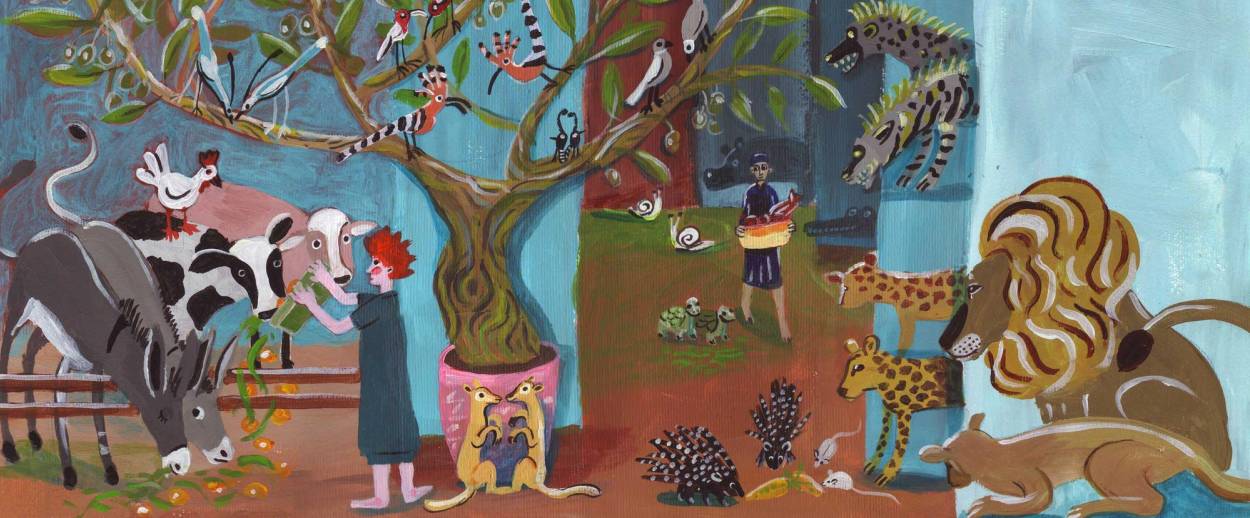



Giving someone a didactic book as a gift is like giving them a Dustbuster. Or a bathroom scale. There’s implicit criticism there, a kind of superior “you require betterment, and I shall better you” messaging that is not very spirit-of-giving. It’s even worse when the recipient of your dull and noble book is a child. Congratulations, you’ve just conveyed to an impressionable youth that reading is a chore and that you are unfun.
Therefore. Here is a collection of giftworthy books that are not only worthy but fun to read. Gifts like these help kids stay readers for life.
BEST BOARD BOOKS
Hanukkah Delight! by Lesléa Newman features a super-cute-without-being-cloying family of bunnies who invite their goat, crocodile, mouse, cat, and owl pals over for candle-lighting, latkes, dreidel-playing, and present-giving. Amy Husband’s amusing illustrations have a bit of a Maisy feel, but with more interesting penciled textures and collage. (Birth to age 3)
Shh…Shh…Shabbat by Linda Elovitz Marshall contrasts the go-go-go busy-ness of weekdays with the serenity of Shabbat. Parents will appreciate a rhyme scheme that’s more complex and vocabulary that’s more sophisticated than most board books, and toddlers will love Evgeniia Golubeva’s vibrant art. (Birth to age 3)
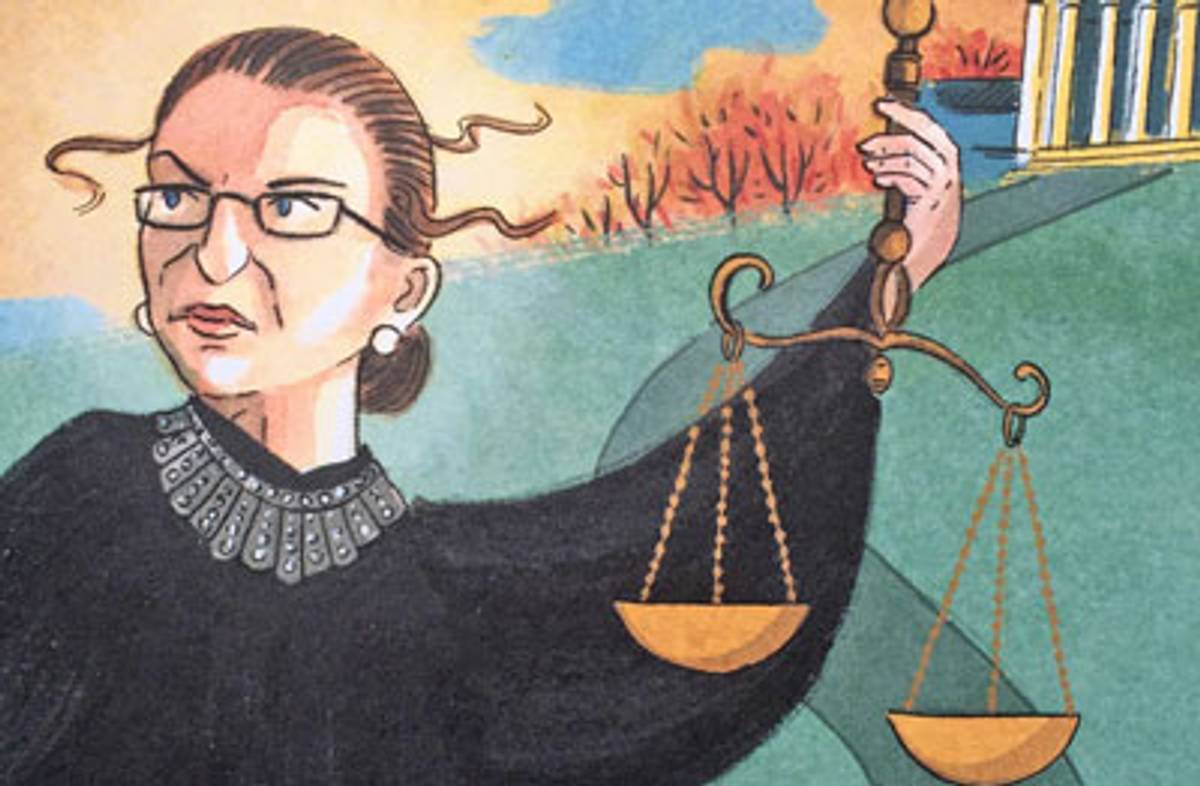
BEST PICTURE BOOKS
I’ve already raved about two of my fave picture books this year:
Fascinating: The Life of Leonard Nimoy by Richard Michelson is a rich look at how Nimoy’s Jewishness informed his life and his portrayal of Star Trek’s Mr. Spock, with retro-hip illustrations by Edel Rodriguez. (Age 5-10)
I Dissent! Ruth Bader Ginsburg Makes Her Mark by Debbie Levy uses the idea of respectful, polite, but firm dissent as a framework for talking about the Supreme Court Justice’s childhood and values. The art is cute but slightly forbidding … much like Ginsburg herself. (Age 6-9)
On to some other faves:
April Halprin Wayland wrote the brilliant New Year at the Pier, one of the best Jewish holiday books ever (and yes, I’m fully comfortable saying this when it’s only been out for six years), so it’s not surprising that her More Than Enough: A Passover Story doesn’t quite reach those lofty heights. Nevertheless, it is delightful. We see a young family shopping, preparing for and celebrating the holiday, announcing “dayenu” regularly along the way. In an afterword, Wayland explains the meaning of the word, outlines the elements of the Seder, and notes that “dayenu’s message—being grateful for the blessings in each moment—goes beyond Passover. It’s a concept I hold in my heart when I’m on a beautiful hike, when I’m biking with my family, when I’m petting my kitty.” A good reminder for all of us. Katie Kath’s illustrations—while warm, curvy-lined and cute, reminiscent of Robert Neubecker—aren’t as deliciously quirky as those of her predecessor, Stéphane Jorisch. (Age 3-6)
If you want delicious art, you won’t do better than The Chameleon That Saved Noah’s Ark, by Yael Molchadsky. First published in Israel, this original folktale tells the story of Noah, his wife, Na’ama, and their sons trying to figure out exactly what chameleons at sea would like to eat. Orit Bergman’s riotous acrylic paintings are a joy, full of color and movement. The roiling seas and stormy skies are kinetic; Noah’s family has a variety of beautiful skin tones and shades of hair; the animals and even the storage vessels seem so full of life they practically leap off the page. The message is that life is a precious, gorgeous wonder, and that “everything and everyone has a place under the sun.” (Age 3-8)
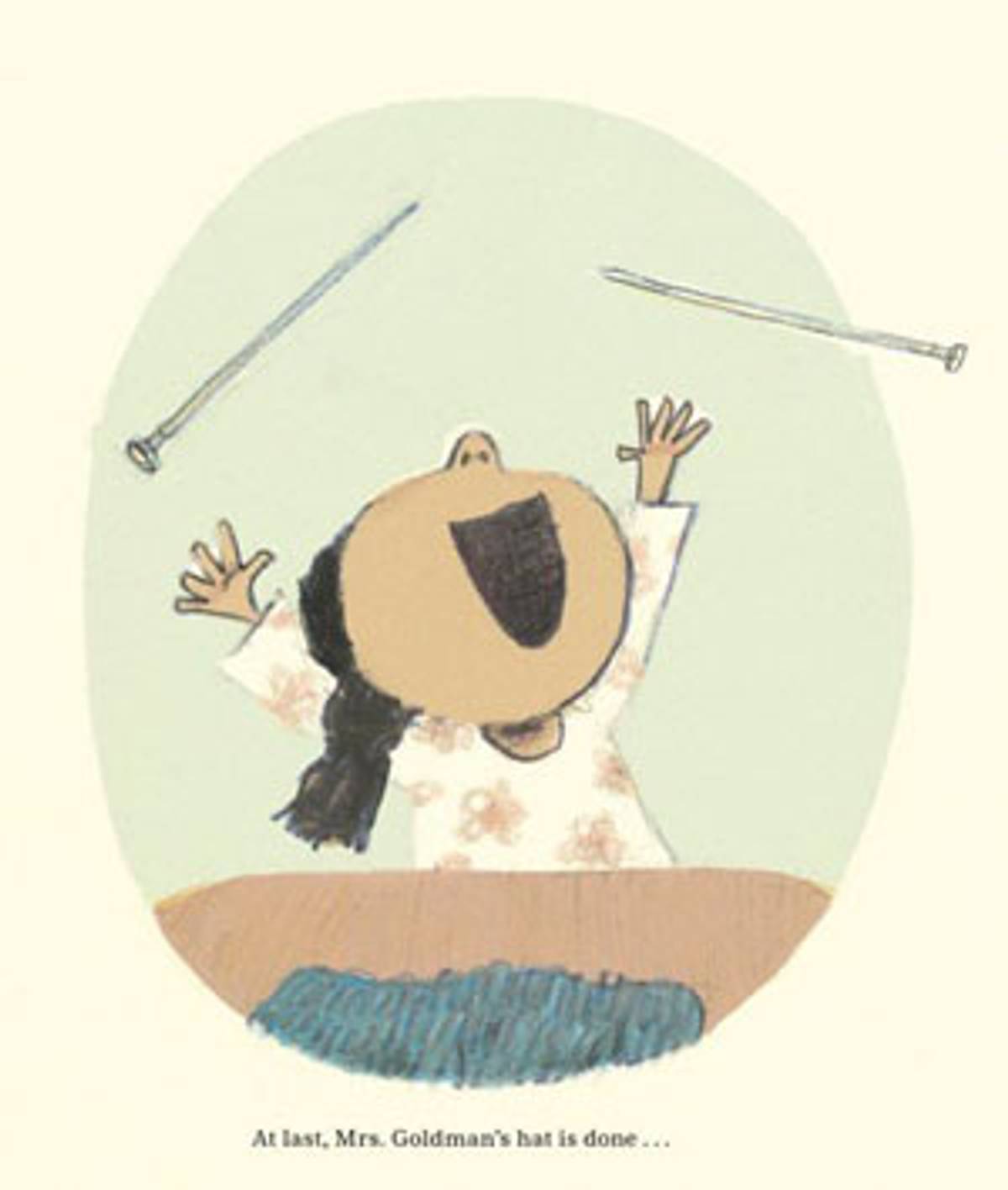
A Hat for Mrs. Goldman: A Story About Knitting and Love by Michelle Edwards, illustrated by G. Brian Karas, is a story about doing mitzvot. Mrs. Goldman is an elderly woman who makes hats for the keppies of all her neighbors. Sophia, her empathetic and observant little Mexican-American neighbor, decides to return the favor. Sophia’s knitting isn’t great, but her pom-pom making is aces, and she’s not only a mensch but also a problem-solver. The storytelling is sweet and fluid, and the illustrations are endearing as all get out. A Hat for Mrs. Goldman feels like a modern-day, multiethnic version of a classic tale, even though it’s brand new. The back matter includes knitting and pom-pom-making instructions. Utterly charming. (Age 4–8)
Kevin Henkes’s Lilly’s Big Day is the pinnacle of the “little girls are obsessed with being flower girls” literary category, but The Flower Girl Wore Celery by Meryl G. Gordon is a worthy new entry in the genre. Emma is super-excited to be in her beloved cousin Hannah’s Jewish wedding, but there are fashion challenges, moments of Amelia-Bedelia-like linguistic confusion, and an unfamiliar young ring bearer to contend with. This LGBTQ-friendly tale features warm, fun, and fashionable illustrations by Holly Clifton-Brown; please give me Emma’s mom’s fascinator and turquoise boots immediately. (Age 4-7)
A Poem for Peter by Andrea Davis Pinkney tells the story of little red-jacketed Peter from the classic children’s book The Snowy Day, along with the story of his creator, Jewish children’s book author Ezra Jack Keats. Pinkney’s writing sings with the jazzy rhythms of performance poetry; when you read it aloud—and you’d better—be ready to scat and swing.
Brown-sugar boy in a blanket of white
Bright as the day you came onto the page
From the hand of a man who saw you for you.
Keats’ journey—a son of Polish immigrants who grew up dirt-poor in East New York tenements, yearned to be an artist, painted murals for the WPA, and was smitten with a magazine photo of a little black boy who became the inspiration for Peter—will be familiar to those who saw the exhibit about Keats’s life and work at The Jewish Museum. Lou Fancher and Steve Johnson’s illustrations blend Keats’ own techniques of bold collage and rubber-stamping, along with gentle realistic watercolor illustration and yellowed news clippings, in a wonderful, snow-scattered urban song. (Age 6-10)
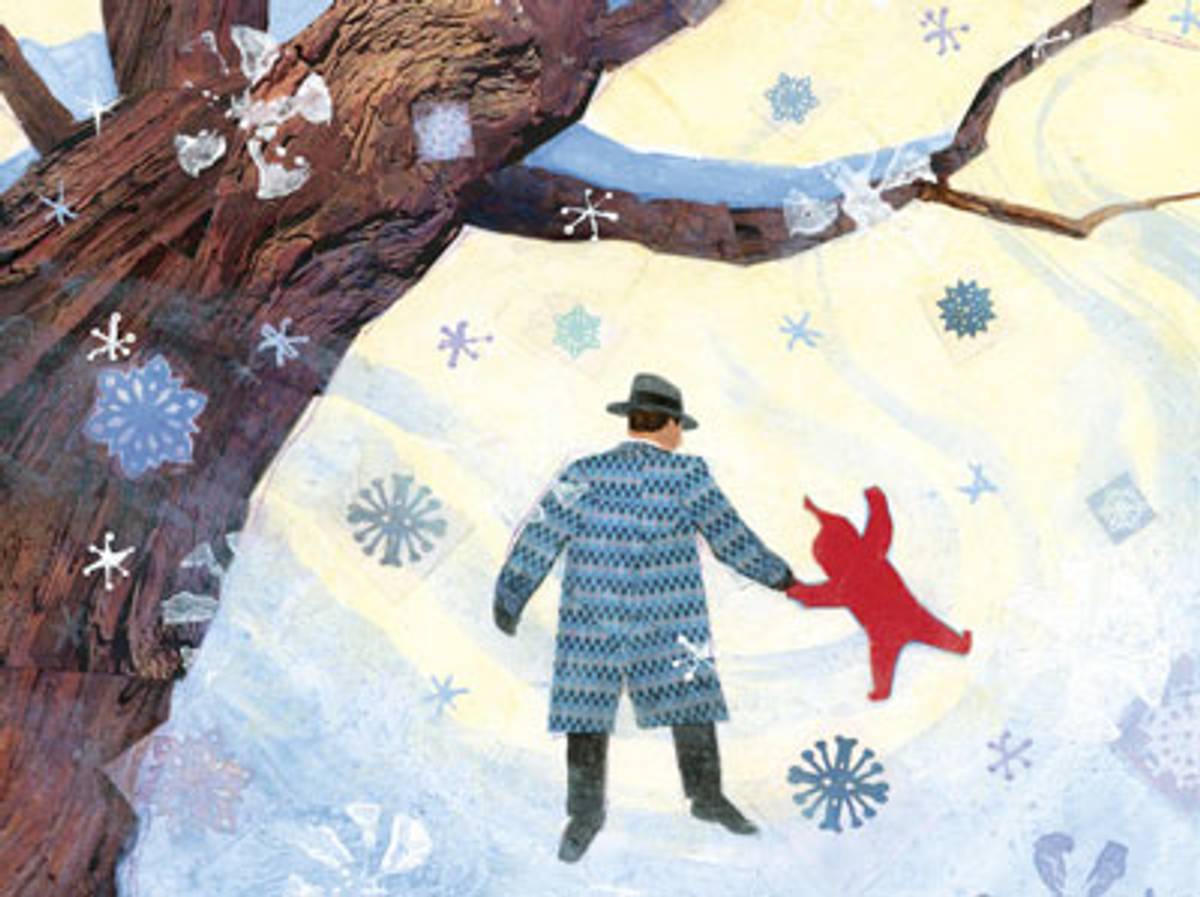
BEST CHAPTER BOOKS
It’s rare to find a chapter book for beginning readers with Jewish content. Lola Levine and the Ballet Scheme by Monica Brown, illustrated by Angela Dominguez, gives us a heroine in the impulse-control-challenged tradition of Junie B. Jones, Clementine, and Ramona. But this heroine is half-Ashkenazi Jew, half-Peruvian-non-Jew, as well as all (mostly accidental) sass. The sequel to Lola Levine Is Not Mean (on my best books list last year) gives Lola an ultra-girly, pink-obsessed, ballet-loving nemesis … who, naturally, becomes a friend. (Age 4-8)
The Bicycle Spy by Yona Zeldis McDonough is a gentle, not-too-scary fictional introduction to the Holocaust, from the perspective of a righteous gentile. Twelve-year-old Marcel, who lives above his family’s bakery in Nazi-occupied rural France, is obsessed with the Tour de France. After discovering his parents’ secret—that they’re part of the French Resistance—he winds up using his biking skills to help save the life of a Jewish friend. The messages about standing up to bullying and not going along with the crowd are skillfully delivered. (Age 8-12)
You gotta admire the ambition of Lily & Dunkin by Donna Gephart, a middle-grade novel about two eighth-graders with big secrets: Lily is transgender and Dunkin has bipolar disorder. Yet the book doesn’t come off as heavy or preachy. Like all of Gephart’s books, it shines with humor and humanity … and as usual, there’s casual Jewish content. (In this case, Dunkin, né Norbert Dorfman, lives with his Floridian Jewish bubbe, who’s the queen of a diet and fitness empire and has a penchant for malapropisms and Yiddish epithets.) The struggles of both characters feel real: Lily’s father vehemently resists calling her by her chosen name or seeing her as a girl, and Dunkin grapples with the side effects of his medications, a past he doesn’t want to think about, and exactly how far out on a limb he’s willing to go to stand up to his new friends—bullies who torment Lily. I loved this book, which is full of small acts of heroism from many different characters. (Age 10-14)
Why don’t the fancy children’s literature people talk more about Jordan Sonnenblick? His Curveball: The Year I Lost My Grip was on my best-books list in 2012, and this year’s Falling Over Sideways likewise tackles a serious subject with grace and a ton of humor. This time, the story’s about 12-year-old Claire, whose dad has a massive stroke while sitting with her at the breakfast table. Once again, Sonnenblick tackles somber stuff with seemingly effortless writing and a lack of self-importance, and he gives us a diverse cast of characters without heavy-handedness or creaky false notes. The depiction of Claire’s dad’s physical and verbal challenges is shockingly horrifying and shockingly funny. (I flashed back to my own dad’s ICU psychosis.) I cried huge, happy tears at the ending. (Age 10-14)
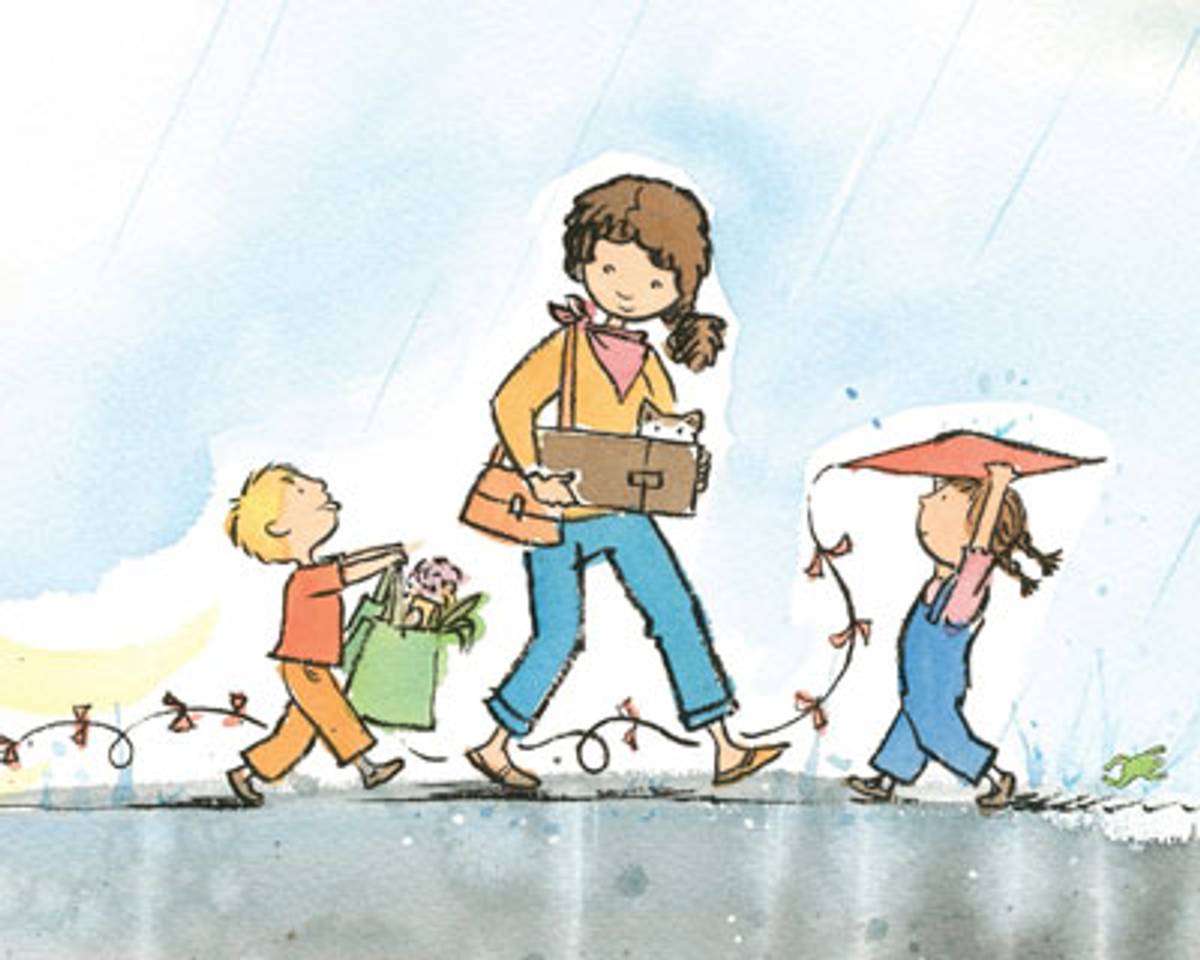
We Will Not Be Silent is another brilliant history book by Russell Friedman that’s not explicitly Jewish but totally is. This one’s about the White Rose student resistance in Nazi Germany, with a focus on siblings and former Hitler Youth members Hans and Sophie Scholl. Eventually, the duo joins forces with other teens and young 20-somethings to write and distribute leaflets urging Germans to fight back against Hitler. Russell’s writing is lively and suspenseful; his use of quotes from contemporary sources is masterful. “I would do it all over again—because I’m not wrong,” Sophie tells a Gestapo interrogator trying to get her to flip on her brother. “You have the wrong worldview.” The book is oversized, full of archival photos, and printed in a good-size font on heavy paper, all of which make it an easy read for any kid interested in history. And the message that resistance to tyranny is vital, no matter the cost, will resonate with many politically aware kids today. (Age 10-up)
Science- and history-loving girls will appreciate Radioactive! How Irène Curie and Lise Meitner Revolutionized Science and Changed the World by Winifred Conklin. The book’s graphic design isn’t as elegant as that of We Will Not Be Silent, but the writing is just as enticing. (I appreciated the physics illustrations and explanations even though I did not understand them.) Both Curie and Meitner experienced vile sexism. Curie’s refusal to bow to traditional notions of femininity and the way she combined love of her famous mother with determination to make her own way in the scientific world, and Meitner’s graciousness toward sniveling post-war German scientists and her forgiveness of her jealous, weaselly former colleague Otto Hahn, make for fascinating reading. (Age 12-up)
I was perpetually a step behind while reading the thriller Girl in the Blue Coat by Monica Hesse; I couldn’t put the damn thing down. Set in Amsterdam in 1943, it’s about a teenage black market wheeler-dealer named Hanneke who is asked by one of her clients to find a Jewish girl who has mysteriously disappeared from a tiny hiding place. Hanneke, a reluctant heroine who initially cares only about keeping her own family well-fed and shoving aside her grief about a lost friend and a dead boyfriend, eventually becomes enmeshed in the Dutch resistance movement. She begins to face the particulars of her past and opens herself up to becoming close to other people again. Girl in the Blue Coat is structurally reminiscent of the brilliant, fiendishly constructed and deliberately misleading Code Name Verity, but it feels right for a younger readership. It’s a page-turner fueled by impeccable research. Brava. (Age 13-up)
Look, giving the gift of dreariness is always a risk with Jewish book-giving. I was in Barnes & Noble last week and saw a “Great Books for Hanukkah!” display, cheeringly featuring—front and center—a death-laden Holocaust book. Whee! I’m on record about my dismay that so much storytelling about the Jewish experience is reduced to this one event, and how especially toxic I think it can be for children. Truthfully, I thought about leaving Holocaust books off my list entirely (next year, I might), but Girl in the Blue Coat and We Will Not Be Silent, in particular, edify in a way that isn’t soul-crushing or factually iffy. That said, I want to cheer for authors who embrace Jewishness in their storytelling without inextricably tying it to death and loss, and I encourage you to support them with your gifting dollars. Happy Hanukkah, all.
***
You can help support Tablet’s unique brand of Jewish journalism. Click here to donate today.
Marjorie Ingall is a former columnist for Tablet, the author of Mamaleh Knows Best, and a frequent contributor to the New York Times Book Review.